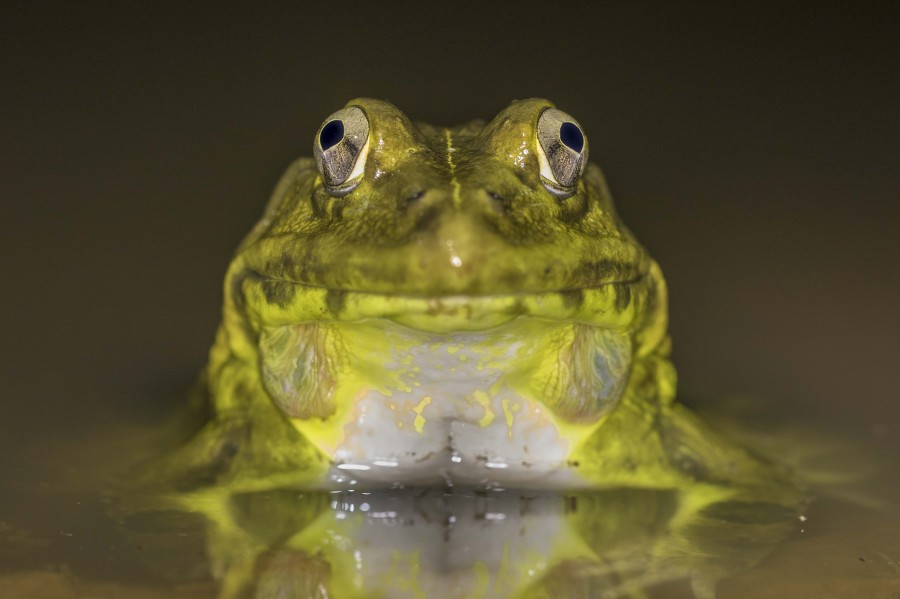Hoplobatrachus tigerinus
Average length: 6.5 inches
Click on the pic to load it in high resolution
Every year in June, when the heaviest rains hit Goa, an army of bullfrogs begins to call right behind my house. Their call, a loud and continuos ong owang, is nostalgic for me. I remember hearing it from my school days. Back then there were many more frogs and the combined volume of their cacophony was sometimes louder than the sound of the heavy rain pounding on the roof!
But over the years the call quotient and volume began to drop. Frog hunting was beginning to take a toll on the bullfrog’s numbers. Bullfrog legs are a prized delicacy in Goa and during these heavy rains villagers would go out with large jute sacks to collect them. The hunting always took place at night. The frogs were located with torch lights. Caught in the strong beam of light frogs are blinded, immobilized and easy targets. Tens of adults could be collected by a single villager in one night. Collecting the frogs at this time had the added effect of destroying future generations to come since all the frogs captured were breeding adults that hadn’t yet reproduced.
In the last few years thanks to the initiative taken by conservationists and the forest department the ban on frog hunting has been much better enforced in Goa. So now when the heavy rains first hit Goa my colleagues go out hunting for frog poachers to apprehend. As expected the number of frog poachers in Goa is reducing with every passing year.
The Indian bullfrog is the largest amphibian in india. Large females can often exceed 15 cms from snout to vent. During its non breeding period this frog is relatively silent and often resides in wells. The bullfrog’s non breeding coloration is an olive green or brown with some spotting and barring. During the breeding season males change their color to a bright yellow and sport bright blue twin vocal sacs. They congregate in rainwater pools and ditches and croak to call females. When a female arrives, the nearest male is usually the one to grab onto her and will fend off rival males by licking strongly with his hind legs!
In areas where there is a long and pronounced dry season the bullfrog aestivates, which is a kind of a summer hibernation. In sandy areas it apparently burrows following the water table and can sometimes be found at depths of 8-9 meters!
Bullfrogs are catholic in their diets and will eat just about anything that moves and can be swallowed. J. C. Daniel mentions in his book Reptiles of India that in addition to to the normal diet of insects this frog has been known to eat mice, shrews, birds up to the size of a pitta, snakes up to a meter in length, spiny tailed lizards, toads, other frogs including smaller sized frogs of its own kind, and land crabs!
In fact, one adverse effect of over harvesting has been the subsequent increase in land crab numbers and a resultant increase in damage to wetland crops. Now who would have seen that coming?

